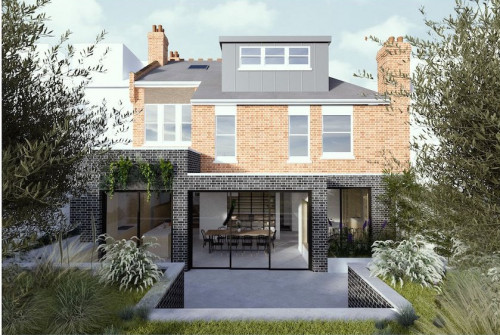How can I make my home more energy efficient?
15 August 2022 by Darren Leach
Old browser alert! We have detected you are using a pretty old browser. This website uses cool features that can't be supported by your browser.
If we let you see the website it would look all weird and broken, nobody wants that!
Update your browser!15 August 2022 by Darren Leach

We often get asked by our clients how we can help they make their home more energy efficient, whilst we might not call ourselves ‘eco-architects’ (to be honest we are a little wary of that label) it is intrinsically ingrained into the way we work. We are always looking for ways to create better performing, more sustainable homes which goes beyond just lowering the heating bill.
With the increases in energy pricing, and the ongoing climate crisis, reducing energy consumption has become increasingly important to everyone. There are many ways to have a positive impact on the efficiency of your home, some very easy things that you can do today, others are more protracted and costly. In this article we are going to share a few of our key suggestions, if you have more specific questions or want to discuss a project in more detail please do contact us.

Lighting makes up about 10% of your energy bill, so this is an area that is defiantly worth investigating. If you haven’t already made the switch to LED lights, now really is the time. They are almost 90% more energy efficient than traditional incandescent bulbs.
Eliminate any draughts from your home by adding draught excluder or sealing around your doors and windows, and draft proof your old chimneys (if they are not in use) will help a home feel more comfortable and reduce heat loss. If you don’t already have curtains installed this is also well worth investing in, to further reduce any heat loss and make the home feel more inviting.
Conserving your water should be something we all look at, especially when you consider that on average, 12% of your heating bill is down to heating water for showers, baths etc. Additionally, from a climate view point water conservation is increasingly important, as the current high temperatures we are experiencing across the UK are highlighting.
There are simple, low cost solutions that can easily be fitted to an existing home which can make a big difference. For example; cistern bags can save up to 2 litres of water per flush, and water butts can store rainwater run off from your roof to use on your garden at a later date. For more ideas on how best to reduce your water usage visit this site.

The windows in our property can have a big impact to the efficiency of our home, new technology means new glazing is far more energy efficient so if you can replace your glazing, you this could have a big impact to your home. Double glazing is good, but if possible, opt for triple glaze.
High performance glazing helps with heat transferring throughout the seasons, so will keep your home at a more constant temporary throughout the year.
When looking to replace any of your appliances or lighting, do remember to check their energy score, and try to buy the best that you can afford (A, but A+++ is optimal). The more energy efficient products might cost a little more upfront but will save you on the running costs and be kinder to the environment.
If you are living in a house do check what insulation is in the loft, you would be amazed by how many people haven’t! Your home could have about 25% heat loss through the roof, insulation is like adding a hat to your home, helping to keep the warmth in winter and cooler in the summer.

If you have the space and the resources, it is well worth looking at installing solar panels onto your property as an alternative energy source, to reduce your energy needs and possible also generate income off excess energy.
If your boiler is old then there are benefits to upgrading it to get a more energy efficient one. There is a lot of press around alternative heating solutions, such as air source heat pumps, which is well worth investigating but do remember these are not suitable for all property types, such as flats.
The insulation on walls, floor and ceiling are often far below modern requirements. This can be rectified through a retrofit, which can easily be incorporated into a renovation or refurbishment project, although it is worth keeping in mind that this will slightly reduce all room sizes.
Sometimes it is better to take down what you have and start again. Whilst this can be done with a whole house, we often work with badly built extensions to houses. These might not be working for the internal layout of the house and are not properly built or insulated, resulting in unpleasant and unusable spaces throughout the year. These can be reworked, often under permitted development, with the space reinstated in a better form, with upgraded efficiency.
We hope you have enjoyed our suggestions. If you would like to discuss a project in more detail do contact us.